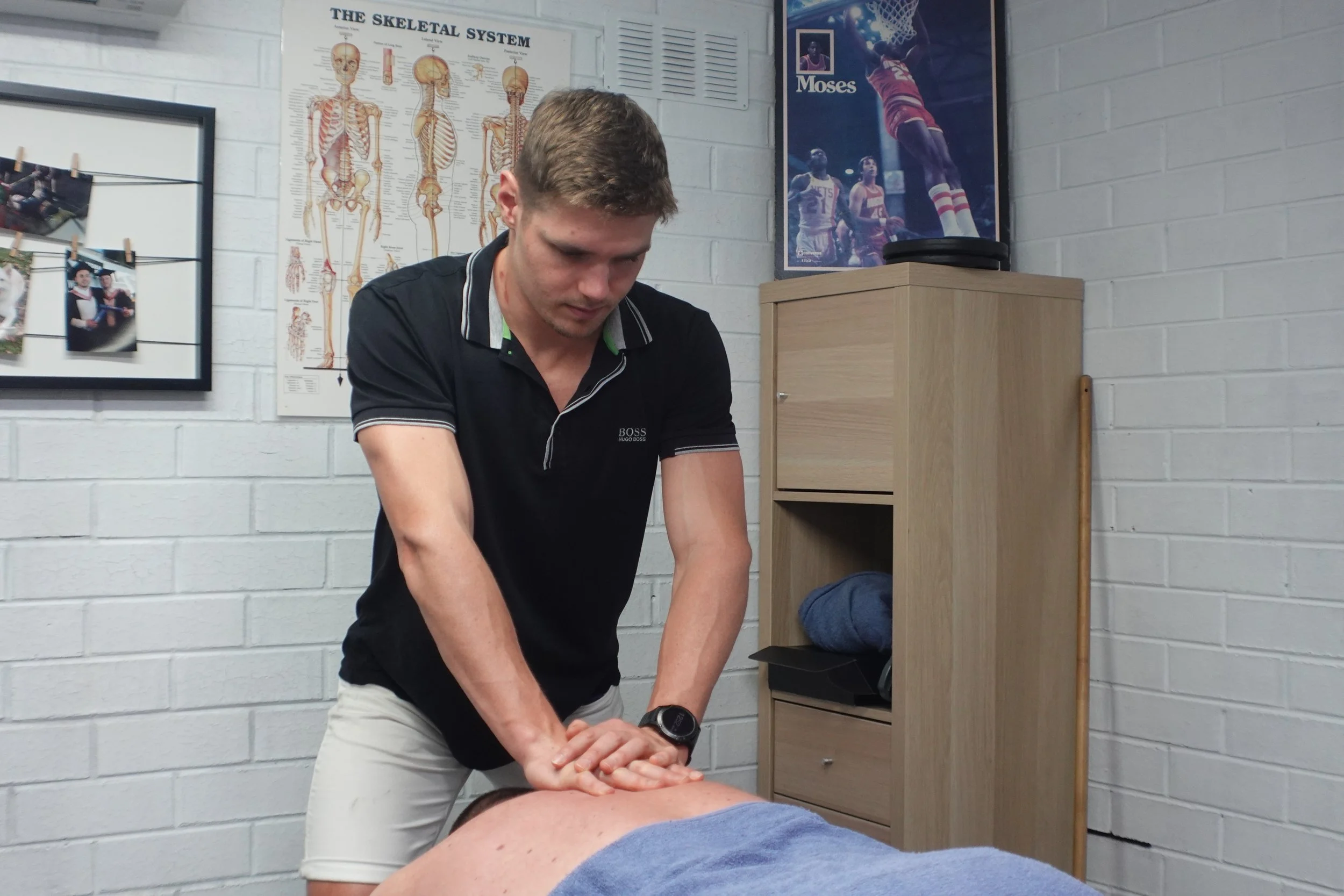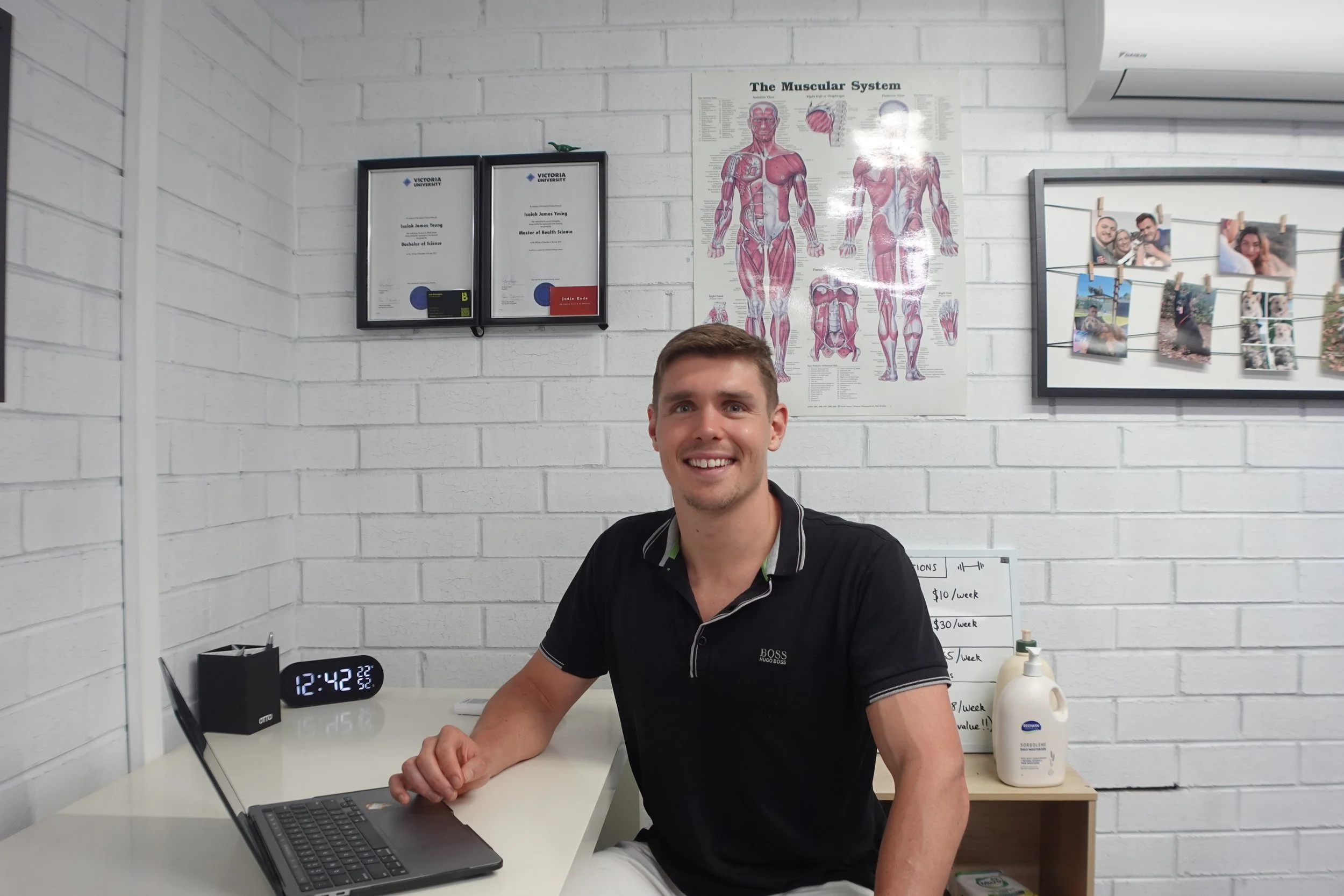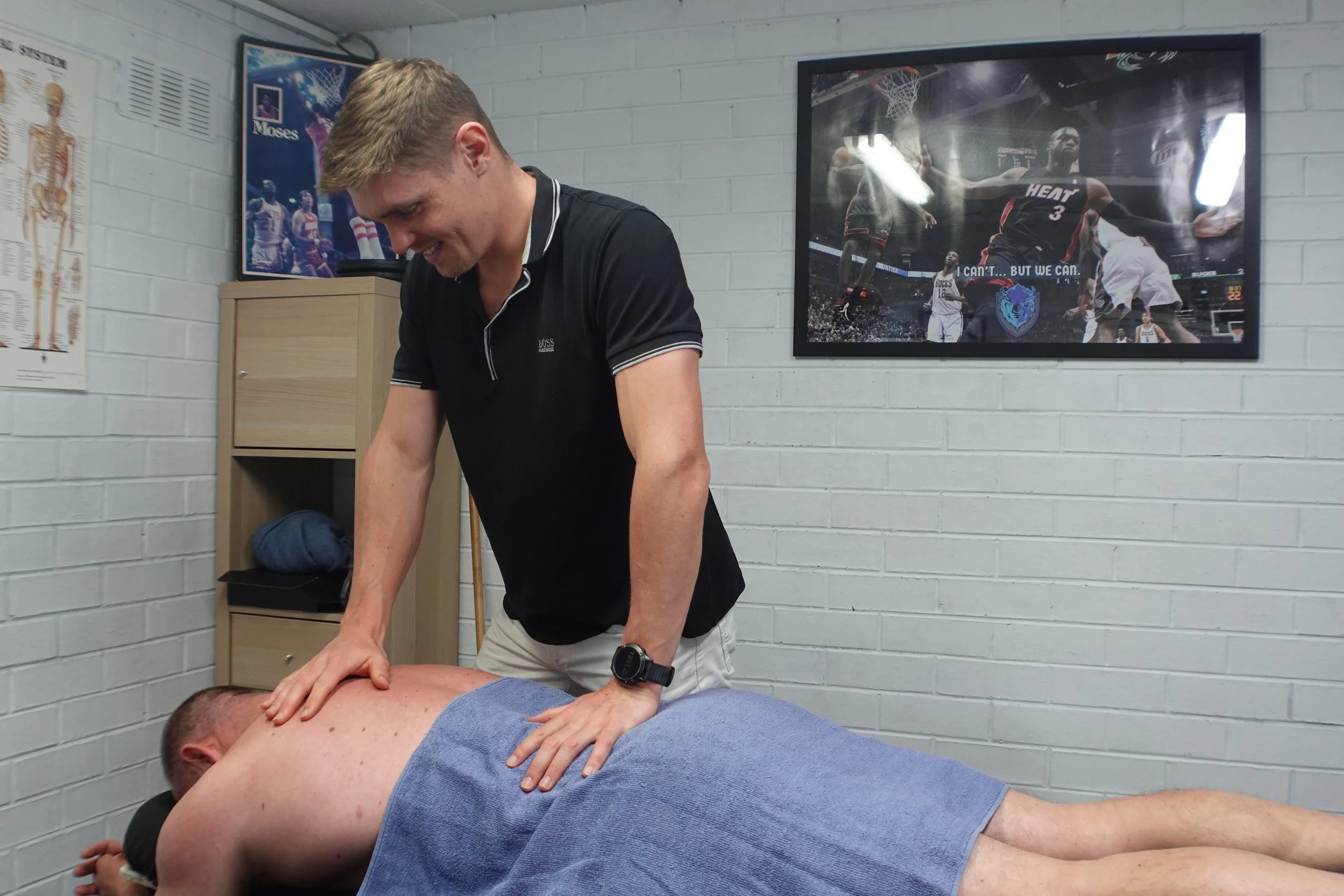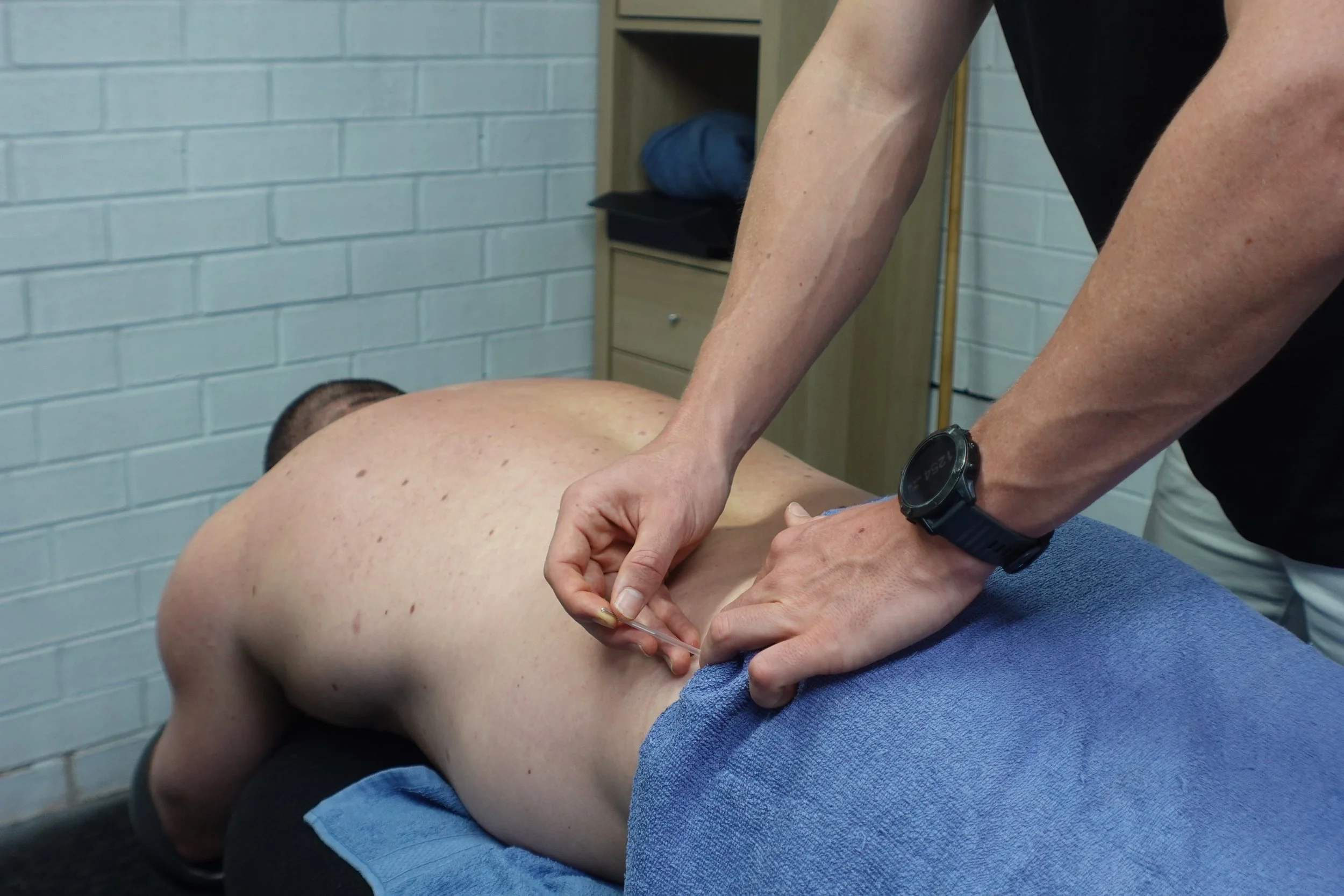Osteopathy at Endure Performance
Osteopath in Cannon Hill
Brisbane Livewell Clinic
At Endure Performance, our osteopathic care is built on experience, evidence, and empathy — combining hands-on treatment, rehab, and education to help you move better and feel stronger.
We work with everyday people, endurance athletes, weekend warriors, and anyone who wants a clearer, more confident path to recovery and performance.
Based at Livewell, Cannon Hill, we proudly support our local communities including Bulimba, Morningside, Hawthorne, Balmoral, Murarrie.
What Is Osteopathy?
-
Osteopathy is a hands-on, whole-body approach to healthcare that focuses on how your muscles, joints, nerves, and connective tissue all work together — and what happens when they don’t.
It’s not just about chasing symptoms. Osteopaths look at the bigger picture — movement patterns, lifestyle, training loads, and day-to-day stressors — to understand why something’s not moving well or feeling right.
Using a mix of manual therapy (like joint articulation, massage, and dry needling), exercise rehab, and education, osteopathy aims to get you moving better and feeling stronger — not just today, but long-term.
Whether you’ve pulled up sore from training, feel stuck at your desk, or are dealing with a longer-term niggle, osteopathy can help guide you back to moving with ease and confidence.
-
Osteopathy stands out through its whole-person approach.
Rather than isolating your injury — we look at what’s driving it. Whether that’s a restriction in your movement, poor recovery habits, or a lack of strength in the right areas, we assess the deeper cause and give you a plan to move forward. We treat the cause, not just the symptom.
It’s not just treatment — it’s tailored care that helps you take ownership of your health.
-
There are plenty of good practitioners out there — but here’s what sets us apart:
Experience both on and off the field – With a background in high-level sport, I understand what it’s like to manage injuries while still training and performing.
Balanced mindset – I’m not here to scare you or make you reliant on treatment forever. I want you to understand your body, not fear it.
No gimmicks, just good care – Your time matters. We cut through the noise, give you a clear plan, and work toward results that last.
Whether you’re dealing with a new injury, persistent pain, or just want to feel and move better — you’re in the right place.
-
Osteopaths are primary healthcare practitioners — that means you do not need a referral to book in. We also happily see patients under the Department of Veterans’ Affairs (white or gold card). If you’re accessing care through WorkCover or under a Medicare Chronic Disease Management Plan, you’ll just need a referral from your GP to get started.
If you’re unsure what applies to you, feel free to get in touch — we’ll help you figure it out.
-
Musculoskeletal Pain
Neck pain and tension
Headaches and jaw dysfunction (TMJ)
Shoulder pain and rotator cuff injuries
Lower back pain and disc-related issues
Hip, knee, and ankle pain
Sciatica and nerve irritation
Tendinopathies and repetitive strain injuries
Sports & Performance Injuries
Overuse injuries from running, cycling, swimming, and lifting
Training-related pain and flare-ups
Biomechanical overload patterns
Recovery support post-race or event
Return-to-play rehab
Postural & Occupational Strain
Desk-related aches and stiffness
Work-related lifting or movement pain
Ergonomic strain and repetitive use injuries
Movement & Mobility Issues
Restricted range of motion
Muscular imbalances
Gait and running analysis issues
Injury prevention programs
-
Osteopaths use a range of hands-on techniques and movement-based strategies to reduce pain, improve mobility, and support long-term recovery. Treatment is tailored to your body and your goals — whether you're chasing performance, managing pain, or just trying to feel like yourself again.
At Endure Performance, treatment may include:
Dry Needling & Myofascial Cupping
Postural & Biomechanical Assessment
Soft Tissue Techniques (massage, trigger point therapy, myofascial release)
Joint Mobilisation & Manipulation
Taping (e.g. rigid, kinesiology)
Muscle Energy Techniques (MET)
Corrective Exercise & Rehab Programming
Postural, Gait, Balance & Coordination Retraining
We'll always explain what we're doing (and why), and work with your comfort level — so you're never caught off guard by a crack, a needle, or anything else unexpected.
Want to dive deeper?
-
Your initial consult is 45 minutes and includes a full assessment, hands-on treatment, and a personalised plan going forward.
We’ll chat through your concerns, assess how your body is moving, and explain everything as we go.
You’ll leave with a clearer understanding of what’s going on — and what to do about it. -
Something comfortable you can move in — activewear or loose-fitting clothes are perfect.
We may need to assess how you move, squat, walk, or stretch — but there’s no need to get undressed unless it’s necessary for the treatment (and we’ll always ask first). -
That depends on the issue, your goals, and how your body responds. Some people only need 1–2 sessions, while others benefit from more ongoing care or rehab support.
We’ll always discuss a plan with you upfront — and never pressure you into ongoing treatment you don’t need. -
Often, yes — but it depends on the type of treatment you’ve had and how you feel.
We’ll let you know what to expect after your session, and whether you should modify your training, rest, or go about your day as normal.
Dry Needling
Targeted relief for tight, sore, or overworked muscles.
Dry needling is a technique we use to reduce muscle pain and restore function by releasing trigger points — those tight, knotted bands in the muscle that just won’t let go.
Using a fine, sterile needle (similar to acupuncture), we target the centre of the problem area to improve blood flow, reduce inflammation, and help the muscle relax.
It’s safe, precise, and often provides fast relief for both new injuries and long-standing tightness.
What does dry needling treat?
Dry needling can be helpful for:
Muscle tightness or knots
Headaches & neck tension
Shoulder, back & hip pain
Running & cycling-related tightness (e.g. calves, quads, glutes)
Tendinopathies
Postural stress
Sports injuries
Referred pain patterns
It’s often used as part of a broader treatment plan — combined with hands-on therapy, movement work, or strength training.
How does it work?
Trigger points (aka “muscle knots”) form when a section of muscle contracts and stays stuck — usually due to overuse, fatigue, poor posture, or injury. This tightness compresses nerves and blood vessels, creating pain and stiffness.
By inserting a needle into the heart of the trigger point, we stimulate a small twitch response in the muscle — releasing the tension and allowing fresh oxygenated blood to flush the area. This improves circulation, decreases inflammation, and restores movement.
What’s the difference between dry needling and acupuncture?
While both use similar needles, the techniques are based on different principles.
Dry Needling targets specific trigger points in muscles and is used to treat pain, stiffness, and movement issues.
Acupuncture is based on traditional Chinese medicine and focuses on balancing energy (Qi) along meridian lines in the body.
Dry needling is rooted in modern anatomy and neuroscience — it’s a tool we use to address musculoskeletal pain and performance restrictions.
What does it feel like?
Most people feel a quick, sharp sensation followed by a muscle twitch or cramp — then a deep release. Some post-treatment soreness is normal and often feels like you’ve just worked that muscle at the gym.
Shockwave Therapy
Effective, non-invasive pain relief that gets you moving again.
Shockwave therapy is a non-surgical treatment used to speed up healing, reduce pain, and restore mobility. It works by delivering high-energy acoustic waves into tissues — stimulating repair and regeneration in muscles, tendons, ligaments, and bones.
Used widely in sports medicine and allied health, shockwave is an excellent option for stubborn injuries that haven’t responded to other treatment.
What conditions can Shockwave help with?
Tendinopathies (e.g., Achilles, patellar, hamstring, gluteal)
Plantar fasciitis & heel spurs
Calcific tendinitis (shoulder)
Tennis or golfer’s elbow
Shin splints (MTSS)
Hip or groin pain
Chronic muscle tightness & trigger points
How does it work?
Shockwave therapy helps to:
Stimulate tissue healing by increasing blood flow and collagen production
Break down scar tissue & calcifications that limit movement and cause pain
Interrupt pain signals by reducing Substance P (a pain mediator in the body)
Restore normal muscle tone by releasing stubborn trigger points
These biological effects combine to create faster healing — especially for long-term or recurring injuries.
What does it feel like?
Most people describe shockwave as a strong tapping or pulsing sensation over the treatment area. It’s usually well tolerated, and sessions are short (typically 5–10 minutes). Some mild soreness may follow, but it usually subsides quickly.
Why we use it
We use shockwave as part of an overall treatment plan — not as a stand-alone quick fix. It’s especially effective for people who’ve tried rest, stretching, or rehab with limited results, or who want to avoid more invasive options.
CURRENTLY NOT AVAILABLE
Strength and Conditioning
Build resilience. Move better. Perform stronger.
Strength & conditioning isn’t just for elite athletes — it’s for anyone who wants to move well, feel strong, and stay injury-free.
Whether you’re returning from injury, managing chronic niggles, or training toward a race or personal goal, structured strength work helps you build a more capable and confident body. We use S&C to bridge the gap between treatment and performance — blending rehab with real-world movement.
Who is it for?
Runners, triathletes & cyclists wanting to improve performance or reduce injury risk
Everyday people looking to feel stronger, more mobile, and more confident in their body
Clients transitioning from injury rehab into long-term resilience
Anyone managing tendon or joint pain (e.g. patella, Achilles, hamstring, shoulder)
Desk workers, tradies, or parents dealing with physical demands or postural strain
What does it involve?
Our S&C approach is built on principles of progressive overload, smart programming, and individualisation.
After a thorough assessment, we’ll tailor a plan that might include:
Strength training (e.g. squats, lunges, deadlifts)
Mobility & stability work
Plyometric or power-based exercises (when appropriate)
Running drills, technique work or movement retraining
Injury-specific rehab and load management
Education around gym setup, loading, and recovery
We’ll meet you where you’re at — whether you’re brand new to strength work or looking to fine-tune the details.
Why is this different?
Our S&C is:
Osteo-informed — so we’re always factoring in injury history, anatomy and biomechanics
Goal-focused — whether that’s pain-free movement, better posture, or race-day readiness
One-on-one — meaning it’s designed for you, not the masses
Where does it fit in?
Strength & Conditioning can be integrated into your osteopathy treatment plan or delivered as a stand-alone service. It’s ideal for clients who want more than passive treatment — and are ready to take an active role in their progress.






